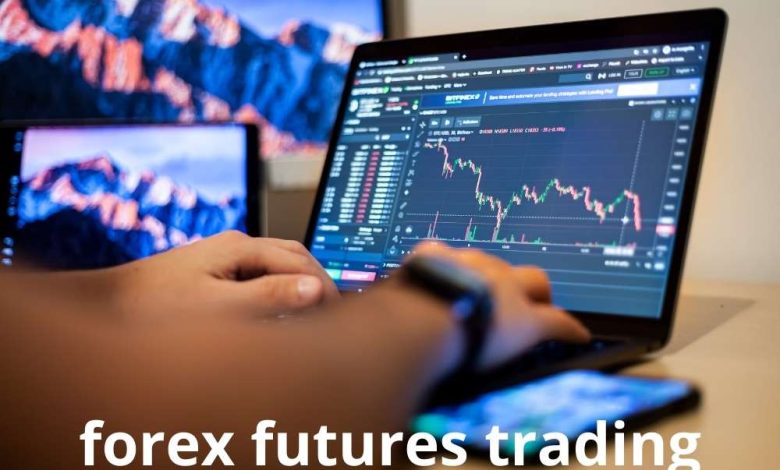Forex futures trading

Forex futures are standardized futures contracts buying and selling currency at a set date, time, and contract size. These contracts are traded at one of the many futures exchanges globally. Futures contracts are publicly traded, non-customisable (standardised in their particular contract size and settlement procedures), and shielded against credit losses by a clearinghouse.
The clearinghouse offers the guarantee via a process in which gains and losses accrued on a daily basis are converted into real cash losses and credited/debited to the account holder.
The process, called the mark-to-market, uses the average of the final few day trades for settlement price calculation. The settlement price is then used to decide if a gain or loss has been incurred in a futures account. In the duration between the preceding day’s settlement and the current’s, the gains and losses are on the basis of the last settlement value.
Futures margins
Futures clearinghouses need a deposit from participants called a margin. A margin in the futures market refers to the starting amount of money deposited to satisfy a minimum requirement. Borrowing is not involved here. Instead, the initial margin acts as a form of good faith to make sure both parties concerned in a trade will satisfy their side of the obligation. Moreover, the futures initial margin requirement is generally lower than the margin needed in a stock market.
In the event of an account taking on losses following daily mark-to-market, futures positions holders have to make sure that they maintain their margin levels above a predetermined amount, called the maintenance margin. In case accrued losses lower the account’s balance to less than the maintenance margin requirement, the trader will be offered a margin call and has to deposit the funds to bring the margin back up to the initial amount.
Exchanges or How do you trade currency futures?
Forex futures are traded at exchanges globally. A popular exchange is the CME or the Chicago Mercantile Exchange Group. In addition, like the majority of futures contracts, Forex may be traded in an open outcry system thru pit floor live traders. On the other hand, this may be done wholly thru electronic means with internet access.
The Tick and contract specifications or Which is more profitable: Forex or futures?
The exchange has standardised each futures contract. Each has specific features that may set it apart from another contract. For example, the CAD/USD futures are physically delivered on the settlement date, standardised by size to 100,000 Canadian dollars. The same trades for twenty months on the basis of the March quarterly cycle.
However, of utmost interest to traders would be the minimum price fluctuation. Also called the tick, the minimum price fluctuation is unique to each contract. Therefore, it is important that the trader understands what it stands for.
For the CAD/USD contract, the tick or the minimum price fluctuation up or down is $ 0.0001 per Canadian dollar increment. This implies a $10 move each way, the contract standardised at 100,000 Canadian dollars.
The implication is that if the Canadian dollar rises from .78700 USD to .78750 USD, a short seller would have lost 5 ticks or $50 per contract.
As against CAD/USD futures, the CHF/USD contract has a 125000 Swiss francs contract size. The tick is $.0001 per Swiss francs increment.
The futures market also offers mini-contracts at half the regular contract standard. Then there are the E-Minis which are 1/10th the size of normal counterparts.
E-Minis have increased liquidity and accessibility owing to lower margin requirements. The contracts trade 23 hours a day, Monday to Friday.
Hedging:forex futures trading
Forex futures are used widely for both hedging and speculation.
Let’s think of an example. An American company in Europe is anticipating a payment of EUR 1000,000 for five months’ services. Let’s say the ongoing spot EUR/USD rate is $1.04.
Fearing more depreciation of the euro against the dollar, the company may hedge the upcoming payment by the sale of eight euros futures contracts, each worth EUR 125,000, expiry expected at the end of five months, exchange rate $1.06 per euro. Over the coming five months, as the euro continues to slide against the dollar, the clearinghouse credits the company’s account each day.
Once the euro has touched $1.03, the fund has realised gains of $3750 for each shorted contract. The calculation is by 300 ticks. There’s a $12.50 per contract multiplier. After the sale of eight contracts, the firm realises $30,000 total gains(pre-clearing fees and commissions accounting).
Had the American company not entered the trade and gotten euros at spot rate, they would have had a $10,000 loss.
Conclusion
Trading forex futures is inherently risky. The trader has to have a good knowledge of macroeconomic and technical analysis. In addition, he must be able to make sense of the unique properties of a contract, besides exchange-related rules. Forex futures are attractive, courtesy of lower default risk, liquidity, and transparency.
However, the trader also has to respect the margin’s power in magnifying losses -and gains. Sound risk management is a necessity the trader will ignore at his own peril. Read the InvestBy Review.





